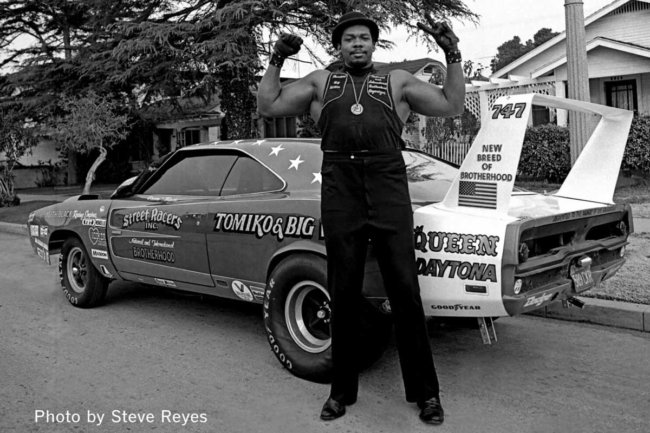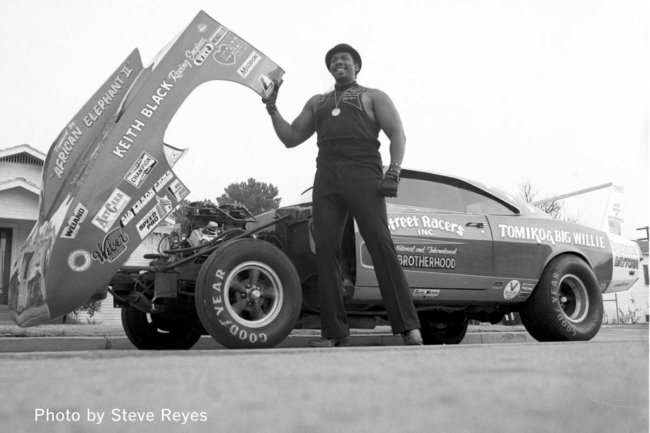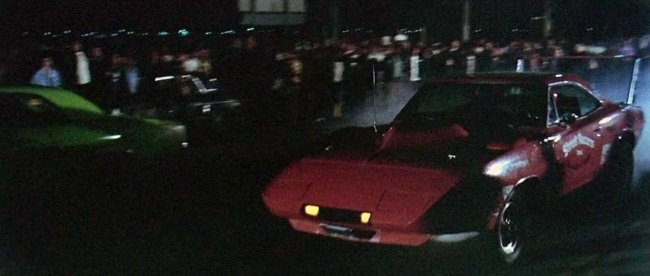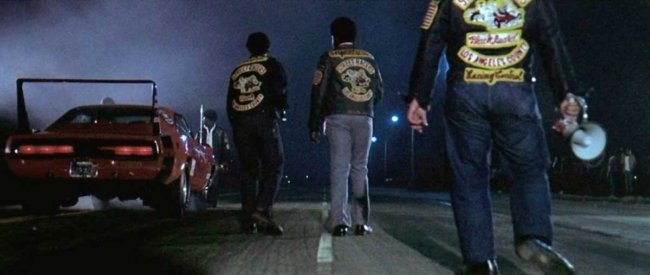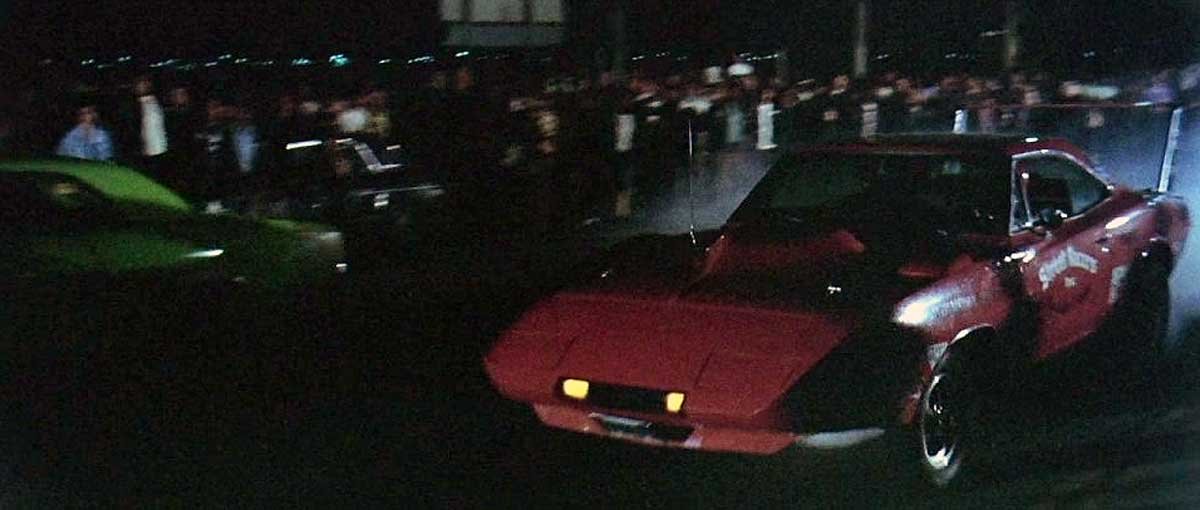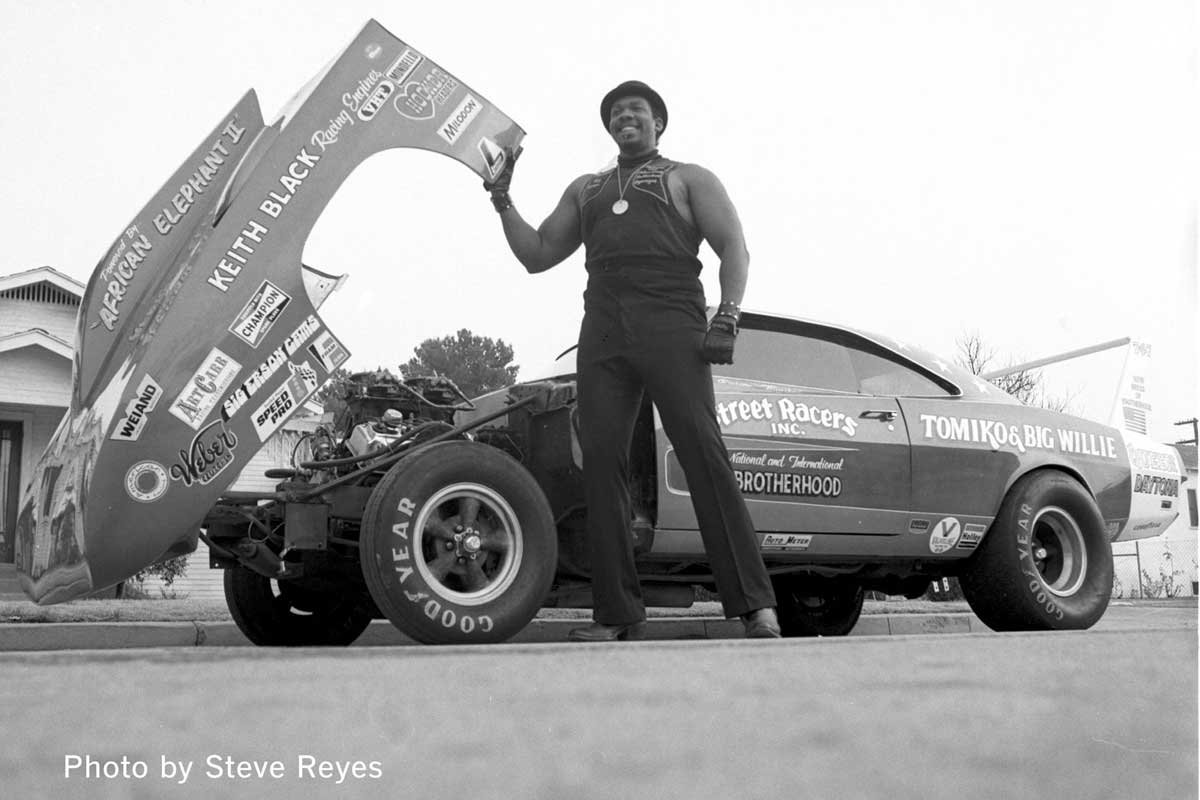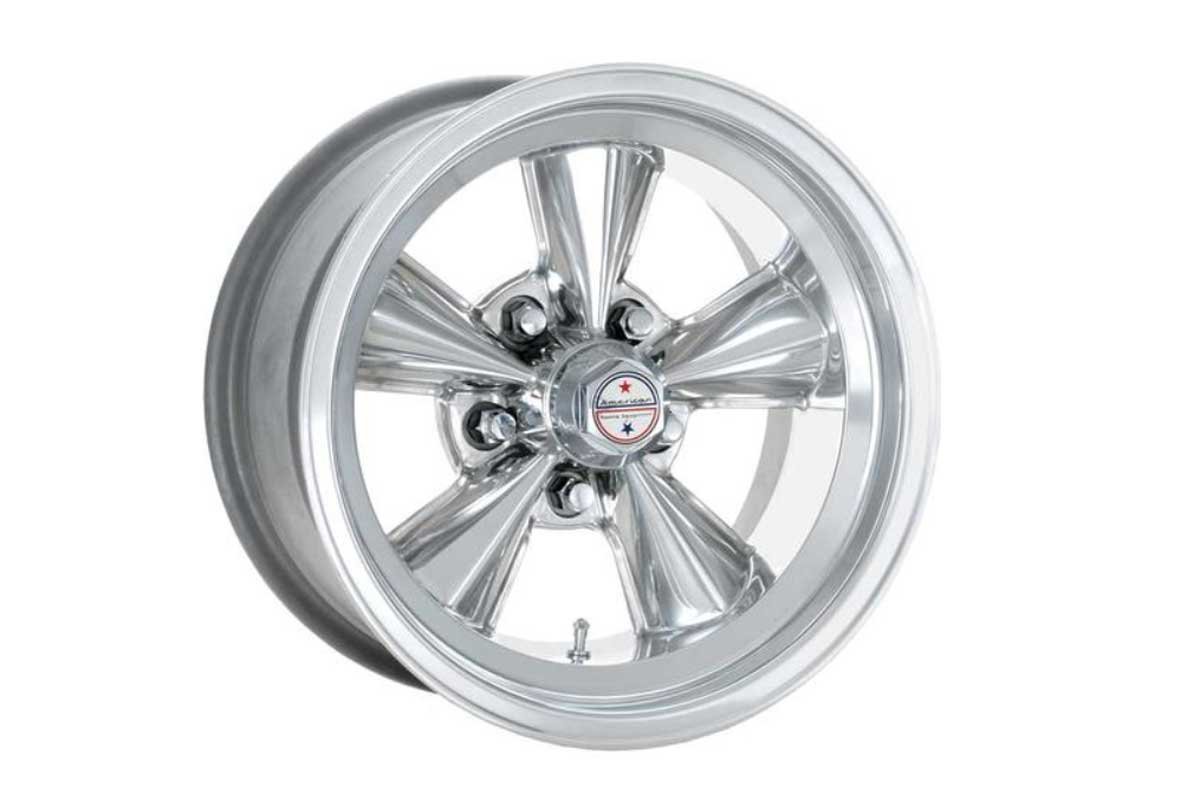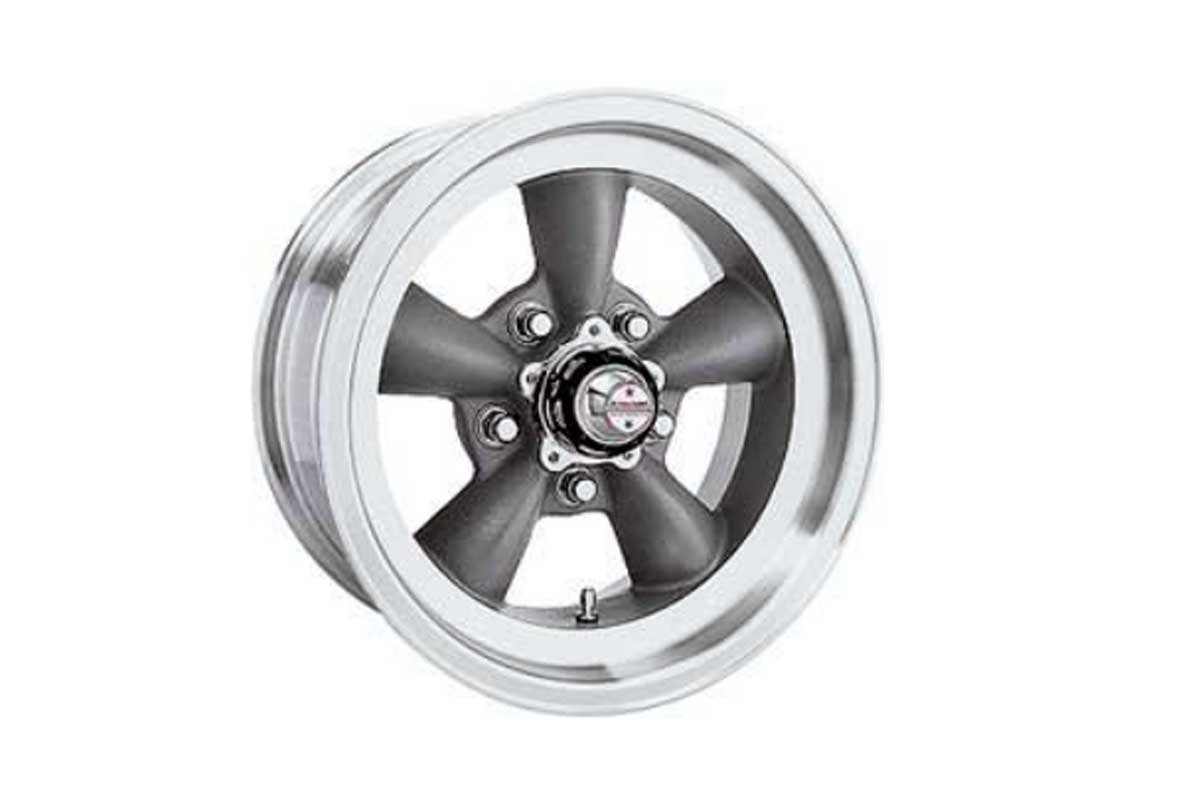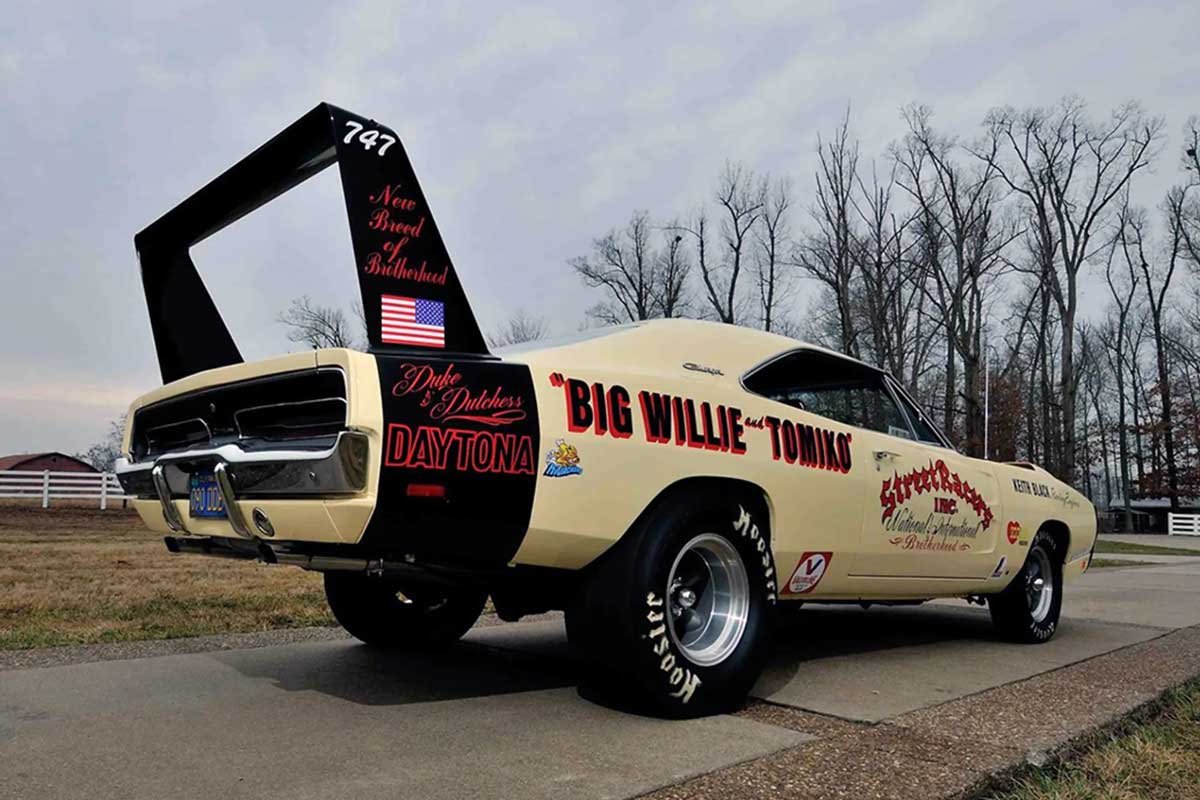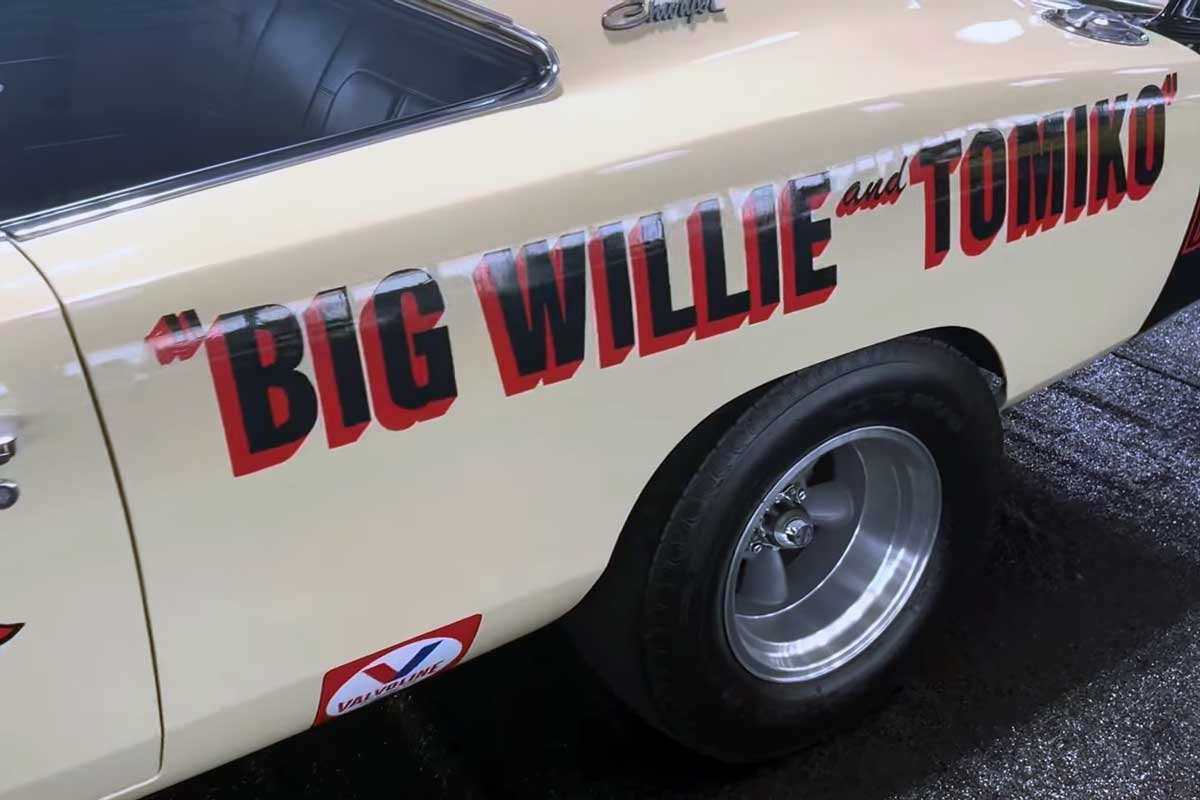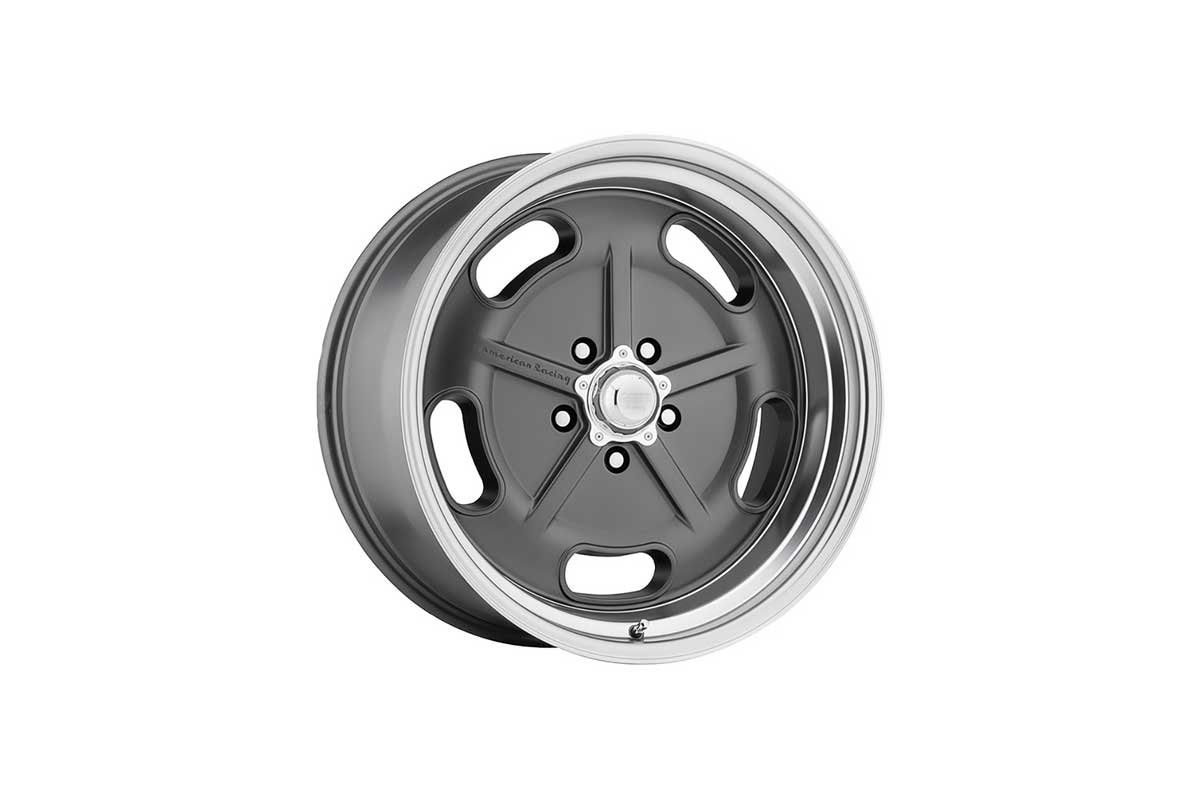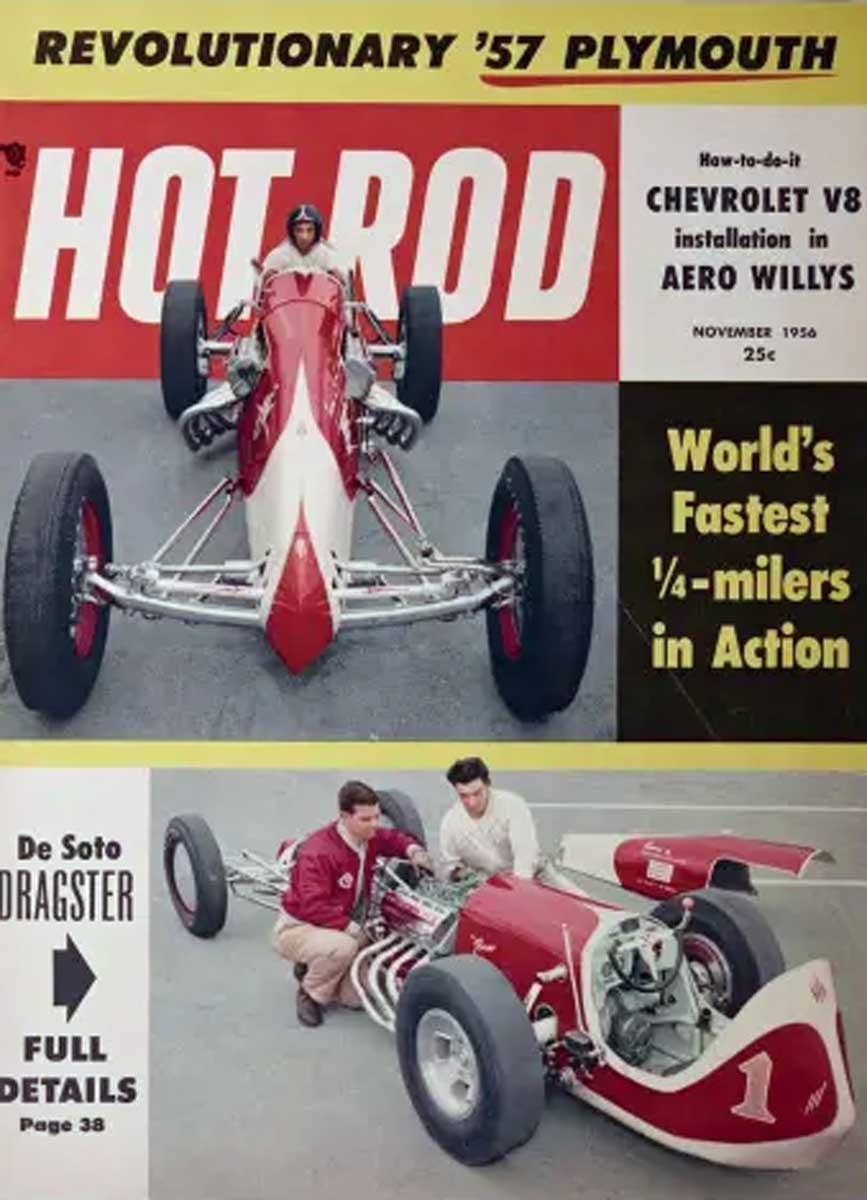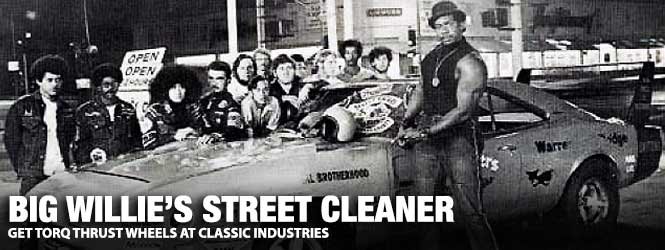
Standing 6’5” and 300+ pounds, “Big Willie” Robinson did not fit the profile of a traditional racer. However, the native of New Orleans relocated to Los Angeles in the early 1960s and became a serious street racer. After his medical discharge from the military, he returned to L.A. and became one of the most prolific figures of the street racing scene of the late 1960s and 1970s.
Above: Big Willie Robinson poses in front of one of three Daytonas he once owned. The Daytona was green and was driven by Tomiko Robinson (wife). It was known as the Queen Daytona and was lost in an on-track accident in Canada in 1973. It had a Keith Black Hemi and a Clutchflite transmission. (Photos Steve Reyes)
In 1966, to reduce the tensions after the Watts riots, Willie began managing the street racing. By 1968, Willie and his wife, Tomiko, established the National and International Brotherhood of Street Racers, an association of gearheads of every race and background.
The Brotherhood, with assistance from the local police, conducted late-night races on blocked-off streets in what was then known as South Central. Then, in 1974, with the help of Mayor Tom Bradley, Willie and Tomiko opened Brotherhood Raceway Park on Terminal Island. Willie was officially the president of the Brotherhood and the track. Despite his towering size, Willie, with Tomiko at his side, ran the Brotherhood like parents caring for their children.
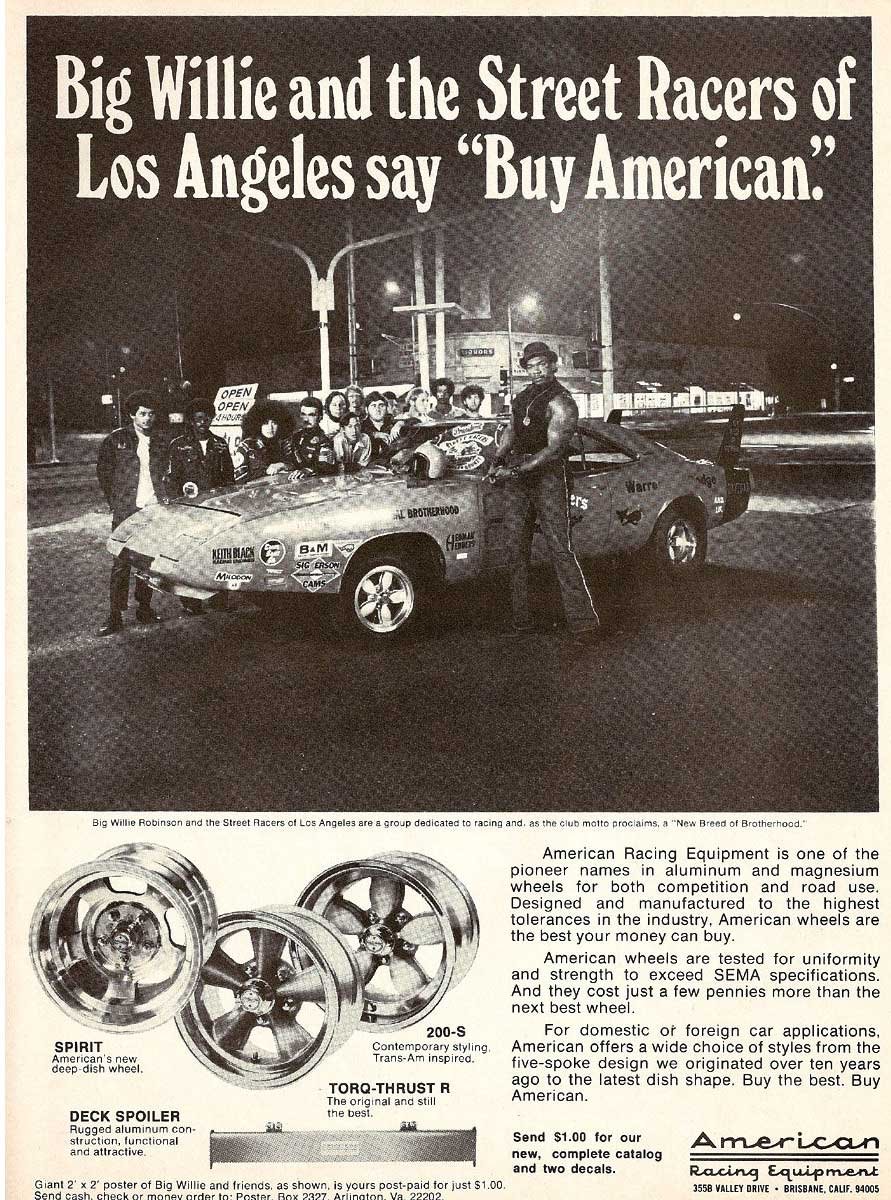
Above: Big Willie, president of the National and International Brotherhood of Street Racers, brought together street racers in the Los Angeles area. If the youths were racing, they weren’t committing crimes was the plan of the Brotherhood. Big Willie and some of his street racers were celebrated in an October 1970 Car Craft Magazine advertisement for American Racing Equipment.
The track not only provided an outlet for the youth in L.A., but also helped foster comradeship among the patrons. Sadly, after multiple challenges with the Los Angeles Harbor Commission to keep the track open, it permanently closed in 1994.
Willie’s R4 red “King” Daytona was made famous by a wicked burnout in the opening moments of the movie Two-Lane Blacktop. Additionally, American Racing Products featured the Daytona in its October 1970 Car Craft Magazine advertisement.
Above: In the opening scenes of Two-Lane Blacktop, Big Willie’s original “King” Daytona can be viewed performing a burnout and then racing on a straight strip of tarmac. Like the green Queen Daytona, the red King Daytona had a Hemi and a Clutchflite transmission. Unfortunately, the King Daytona was damaged beyond repair in the early 1970s.
Willie and Tomiko had three Daytonas over the years. The original R4 red King Daytona with a Keith Black (KB) Hemi and a B&M Clutchflite transmission was destroyed during an acid bath. During the same period Willie had the red Daytona, Tomiko had an F6 green Daytona known as the “Queen” Daytona. It, too, had a KB Hemi and Clutchflite. Unfortunately, the green Daytona was lost in a racing crash in Canada in 1973. The driveline was stripped from the Dodge, and the carcass was sold to a Canadian farmer.
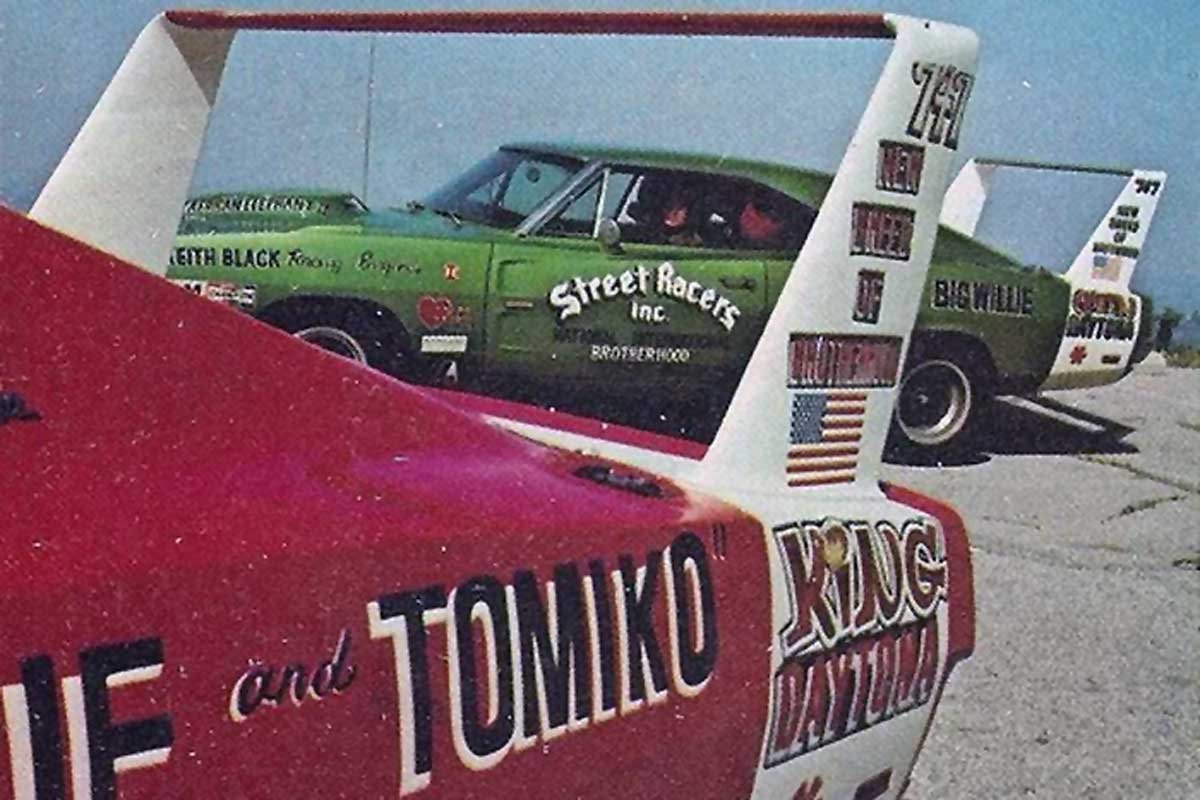
Above: The King Daytona was the original Daytona, and Big Willie handled the driving chores. Tomiko was at the controls of the green Queen Daytona. Both Daytonas were extensively modified and lightened to keep the cars competitive on the street or the strip.
A third (used) Daytona was purchased, and it is the only Daytona that exists today. Originally red, it was repainted in a cream color and became known as the “Duke and Duchess” Daytona. The last of the three was a 440-wedge car. Although a KB Hemi had been built for it, the engine and Clutchflite remained uninstalled for decades before being sold. The cream-colored Daytona was never used in competition and was often used by Willie’s brother, known as “Tiny.”
Above: A third Daytona would get the same exterior treatment as the first two, but a Keith Black Hemi never made its way between the fenders. The originally red Daytona received a quick paint job switching to a cream color, and it was named the “Duke and Duchess.” The 440/Torqueflite Daytona is the only one of the three to exist today. It has been passed through several owners and is now fully restored to its former glory.
Tomiko died in 2007, and Willie followed in 2010. But, while they are gone, their decades-long legacy and motto, “New Breed of Brotherhood,” endures. And their last Daytona, the Duke and Duchess, has been restored and has passed through a few collectors’ hands in the previous two decades.
American Racing Equipment, Inc. was founded in 1956. The company pioneered aluminum and magnesium wheels that defined automotive performance, style, and culture. The wheels dominated the track, and that race mystique carried over onto the street. American Racing’s motto was “we’re never idling.” The company’s constant technological advances made it a household name trusted by auto enthusiasts.
Left: One of American Racing’s most popular wheels is its Torq Thrust line. The beautiful two-tone wheels help any Mopar stand out from the crowd. Center: American Racing has highly polished wheels. The wheels are similar in design to the Torq Thrust wheels. Right: The Salt Flat Special wheels are a unique look for any Mopar. All these wheels and more are available from Classic Industries.
By 1963, American Racing introduced its most iconic wheel, the Torq Thrust. The wheel is still available 60 years later. Its unique, simple, lightweight 5-spoke design has unsurpassed styling, and it proved to be so popular Hot Rod Magazine named the Torq Thrust wheel one of the top twenty speed parts that changed the automotive industry.
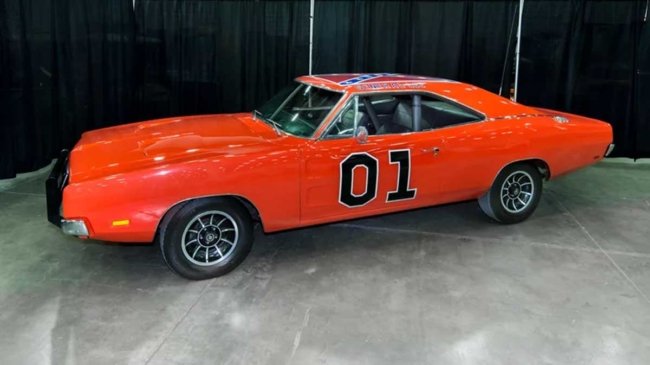
Above: The General Lee wears what is possibly the most iconic wheel – the Vector wheel. The five-lug, ten-spoke, the one-piece aluminum wheel was on the Charger from 1979-1985. (Photo Steve Lagreca)
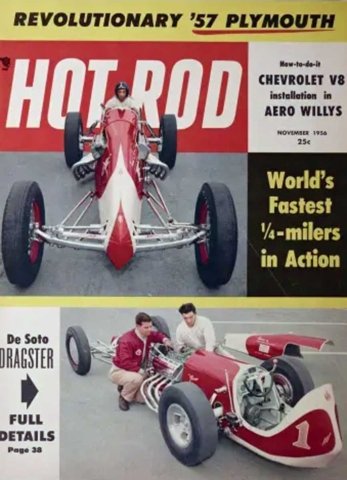
Above: American Racing founder Romeo Palamides made the cover of Hot Rod Magazine in November 1956. The dragster wore a pair of 15×7-inch magnesium wheels made by Palamides. The engine was a 305-cubic-inch DeSoto Hemi V8 with a 13.5:1 compression ratio. The transmission was a ’39 Merc with a Lincoln U-joint direct to a ’40 Ford rear end with 3.78:1 gears and a Halibrand quick-change rear end.
Platinum Equity investment group acquired American Racing Equipment, Inc. in June 2005. Today, American Racing Custom Wheels has added the American Racing Forged line of aluminum wheels that are stronger and lighter than previous wheel offerings. The latest wheels are constructed of 6061 forged aluminum, and each wheel is made to order in the size, style, and finish desired by the customer.
Suppose a set of American Racing Custom Wheels like the ones on Big Willie’s Daytona is needed to enhance your ride; they can be found at Classic Industries. Its website has pages of wheels, center caps, lug nuts, and additional wheel accessories. Additionally, Classic Industries has components for the classic Mopars of the muscle car era.


